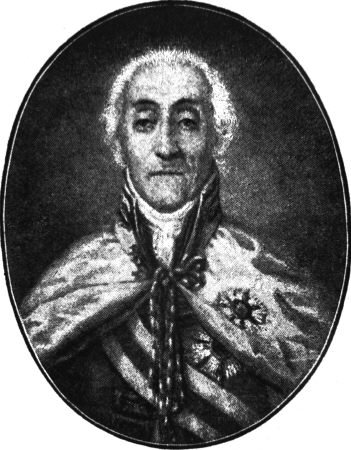
French Napoleonic Rule (1807–1809)

In 1806, the Ottoman Empire declared war on the Russian Empire; and thereafter, the Septinsular Republic was ceded to Napoleon’s First French Empire under the terms of the Treaty of Tilsit in 1807. In August 1807, the French General Cesar Berthier arrived in Corfu from southern Italy with 4,000 French and close to equal the number of Italian troops and artillery. Napoleon placed high strategic value on Corfu ahead of the other Ionian Islands, Parga on the Greek mainland and even Sicily. And so, most of his forces were concentrated on Corfu rather than Zakynthos and Kefalonia. He only placed a 1,200 strong Greek-Albanian and Italian militia, 25–30 French soldiers and four French officers on each island. This relatively small garrison would have consequences later.
Initially, the Constitution of the Septinsular Republic was abolished, the islands were annexed and the islanders became subjects of the French Empire placing them under the governornate of Berthier in late 1807. His troops symbolically raising the French flag over the citadel of Fortezza Vecchia in Corfu in place of the flag of the Septinsular Republic. Obviously, this caused serious indignation and dissent among Zakynthians and other Ionian Islanders. However, ultimately the islands were not annexed by France and she decided to largely retain their institutions of government and the Constitution of 1806. On March 28, 1808, Berthier was replaced by his former assistant, François-Xavier Donzelot. The merchants of Zakynthos and Kefalonia were also very displeased with the consequences of the Continental Blockade applied by Napoleonic France during this period. This blockade particularly impacted the currant producers and merchants of Zakynthos and Kefalonia given they relied so heavily on British markets to sell their produce. The blockade also resulted in food shortages on the islands. It is no surprise that there were many elements on the island; particularly, among the Civili and even some Popolari, which were sympathetic to the British because they believed it was a stronger guarantor to their commercial interests. People like the former President of the Septinsular Republic, Antonios Komoutos maintained secret contacts with the former British diplomat, Spyridon Foresti who was then living in Malta.
In the meantime, for many years 4,000–5,000 farm hands would travel annually to the Peloponnese and Roumeli from the island of Zakynthos. The Zakynthian farm hands brought back valuable grain as payment for their services – given Zakynthos often suffered grain shortages due to the over-reliance on currant trade and production – but they also started to imbue their fellow mainland Greeks with ideas and songs of freedom such as Rigas Ferraios’s battle hymn and Zakynthians poets such as Antonios Martelaos which sometimes upset the local Ottoman Turkish authorities. At the same time, the previous Russian occupiers had established mercenary forces on the island with a view to using those forces for their interests at a later time. Specifically, two regiments had spent time training on the island, one under the command of Anagnoti Papagiorgiou who led Peloponnese forces and another Pieros Grigorakis who led a Maniot force. In addition, the local militia was providing a valuable opportunity for local Zakynthians to train in warfare. Most significantly, in April 1806, Theodoros Kolokpotronis, who would play in the leading role in the Greek War of Independence, visited Zakynthos for the second time. He came into immediate contact with locals such as Dionysios Romas who shared similar visions of independence. The seeds were being planted for what would come later.